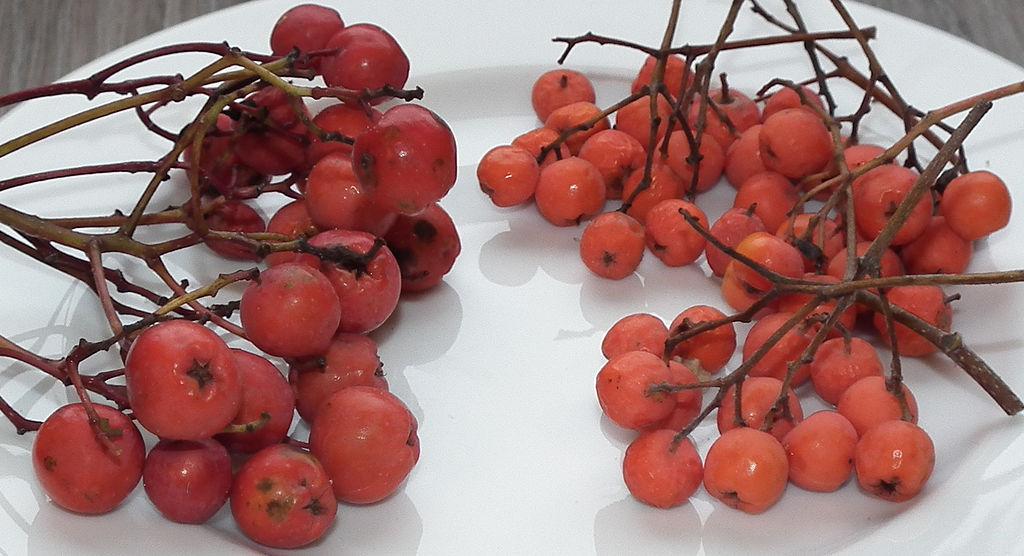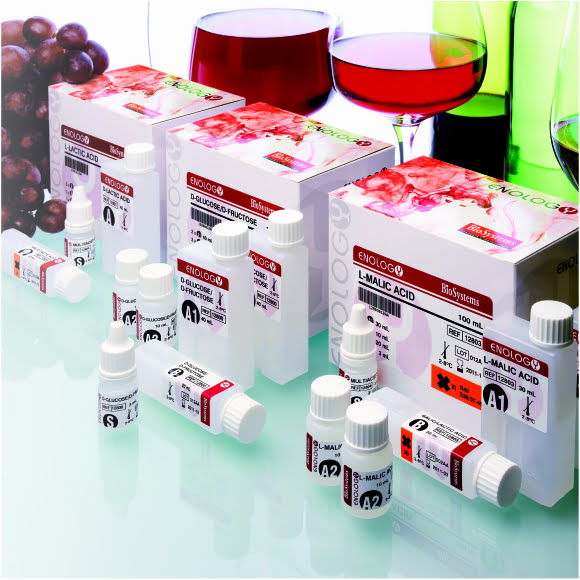Imported wines entering the Japanese market, accompanied by a report of physico-chemical analysis carried out even with BioSystems equipment, must not contain sorbic acid above the limit of 200 mg/liter, the maximum allowed according to OIV recommendations.
Sorbic acid – definition and usage
Sorbic acid is a naturally occurring organic compound. It is used in the food industry for the natural preservation of many products, including wine. Most likely, sipping from a glass of wine (in Romanian, "to sipp" is "a sorbi") comes from the very presence of this compound, which makes it possible for the Bahic liquor to be kept as long as possible. The form in which sorbic acid is used as a preservative is as a mineral salt – potassium sorbate. This compound can be determined with BioSystems analyzers.
Although easily confused by name with ascorbic acid, which is actually vitamin C, sorbic acid is also called 2,4-hexadienoic acid, and its chemical formula is 6H8O2.
In the past, the fruits of the mountain ash were used as bait to attract and catch songbirds. Like elderberries, people cannot eat them fresh, as they are bitter to the taste and irritating to the stomach lining. Ingested however, they have astringent, laxative, diuretic and cholagogue effects.
The vitamin C content prevents scurvy, and sorbitol could be used as a sugar substitute by diabetics, but it seems that production from this source is not cost-effective. Traditional Austrian medicine [2] has used the fruit internally (as tea, syrup, jelly, or liqueur) to treat respiratory tract ailments, fever, infections, colds, flu, rheumatism, and even gout.
In the kitchen, the fruit is made into compote, jelly, jam, jam, spicy syrup, a sour chutney (for lamb or venison), or juice. They can be made into liqueurs or fermented quietly, like wine. Fruits can become edible by freezing, cooking, or drying, which degrades the parasorbic acid.
Where can you find sorbic acid in its natural form?
Sorbic acid was first isolated from the unripe fruit of the mountain scorbus, the bird scorbus or mountain ash (Sorbus aucuparia), which is a species of tree in the Rosaceae family (i.e. it is related to many fruit trees and shrubs or even to the roses).
The fruits of the mountain ash are eaten by about 60 species of birds and several mammals. They are especially appreciated by songbirds, but also by hoofed game, red foxes, European badgers, lynxes, and squirrels.
The fruits and leaves are edible and have been used in the mountain peasant household to prepare food, sweets, and drinks, in teas, as folk medicine, and often as fodder for animals around the house (a portion of mountain ash fruits used to make chickens produce eggs with a brightly colored yolk and a firm shell, resistant to handling and storage).
Leaflets – the young leaves smell like marzipan when rubbed between the fingers. They were used by young mountain folks to scent their skin by rubbing them on their bodies after washing. Even though the flowers have an unpleasant smell, like rotting fish (trimethylamine), their nectar is rich in fructose and glucose and that’s why they are very popular with bees. Perhaps this is also a reason why honey doesn’t go bad, as it has the natural preservative sorbic acid, which is also found in the pollen of mountain ash.

Source foto: Sorbus aucuparia.
The fruit (as with most seedlings) is green before ripening and this is the phenophase in which it contains the maximum amount of sorbic acid. As they ripen, the fruits turn orange or even caramelized when overripe, when they also accumulate some sugars, making them even more attractive to flying eaters.
The pulp of mountain ash fruit contains:
- carotenoids (pigments that give color to egg yolks, tomatoes, mushrooms, all green leaves, fruit, and flowers),
- citric acid (found in lemons, oranges, tangerines, peppers, rosehips and gooseberries),
- malic acid (found in green apples, crabapples, sour cherries – grapes in veraison),
- parasorbic acid (a cyclic lactone of sorbic acid; heat treatment or hydrolysis converts the lactone to sorbic acid),
- pectin – which helps to thicken the jam (pectin is found in huge quantities in the seed pods of the seeds, especially quinces),
- provitamin A (beta-carotene),
- sorbitol (less commonly known as glucitol, a sweet-tasting polyol that occurs when glucose is reduced),
- tannin (also found in wine, from grape skins, seeds, grapes) and
- ascorbic acid – vitamin C.
This tree looks so great that many of you may have already thought of bringing it into your gardens. I wouldn’t advise you to risk acclimatizing it, as it is a host plant for fire blight, which decimates quince, apple, pear, apple-hips, and even roses.
Benefits of sorbic acid in wine
In enology, sorbic acid in the form of potassium sorbate salts are used as a preservative. The maximum limit allowed by the OIV for sorbic acid in wine is 200 mg/L. In the presence of sulfur dioxide, sorbic acid inhibits yeast populations in pre-packaged wine and is used to avoid unwanted fermentation in wine bottles, especially in wines with residual sugars and in sweet wines.
Highlighting the content of sorbic acid in foodstuffs
Sorbic acid oxidizes to malondialdehyde (MD) which reacts with thiobarbituric acid (TBA) to generate a compound that can be measured spectrophotometrically.
OXIDANT

The colorimetric method is used for the determination of sorbic acid. The advantages of using this method with BioSystemsinstruments are the calibrator included in the analysis kit and the fact that the liquid reagent is stable until the expiry date. In the list of reagents for this analysis, the reagent catalog reference is 12880.
The specifications of the analysis kit, made available for its analyzers by BioSystems Romania, are:
- kit volume: 50 ml
- method: monoreactive kinetic, reading at 520 nm
- linearity limit: 300 g/L
- detection limit: 2,19 mg/L
Sorbic acid is not a dangerous additive, but, on the contrary, a useful one. But as we know the Japanese, with their characteristic rigor, must respect their requirements if we want to export our wine to their country. And with BioSystems analyzers, precision, and accuracy are in the right place.
Reference:
[1] https://en.wikipedia.org/wiki/Sorbus_aucuparia
[2] Vogl S, Picker P, Mihaly-Bison J, Fakhrudin N, Atanasov AG, Heiss EH, Wawrosch C, Reznicek G, Dirsch VM, Saukel J, Kopp B (Oct 2013). "Ethnopharmacological in vitro studies on Austria’s folk medicine – An unexplored lore in vitro anti-inflammatory activities of 71 Austrian traditional herbal drugs". Journal of Ethnopharmacology. 149 (3): 750–71. doi:10.1016/j.jep.2013.06.007. PMC 3791396. PMID 23770053.
[3] Fisa tehnica analiza 12880, Acid sorbic, Food & Beverage analysis, BioSystems
Photo Source: BioSystems








